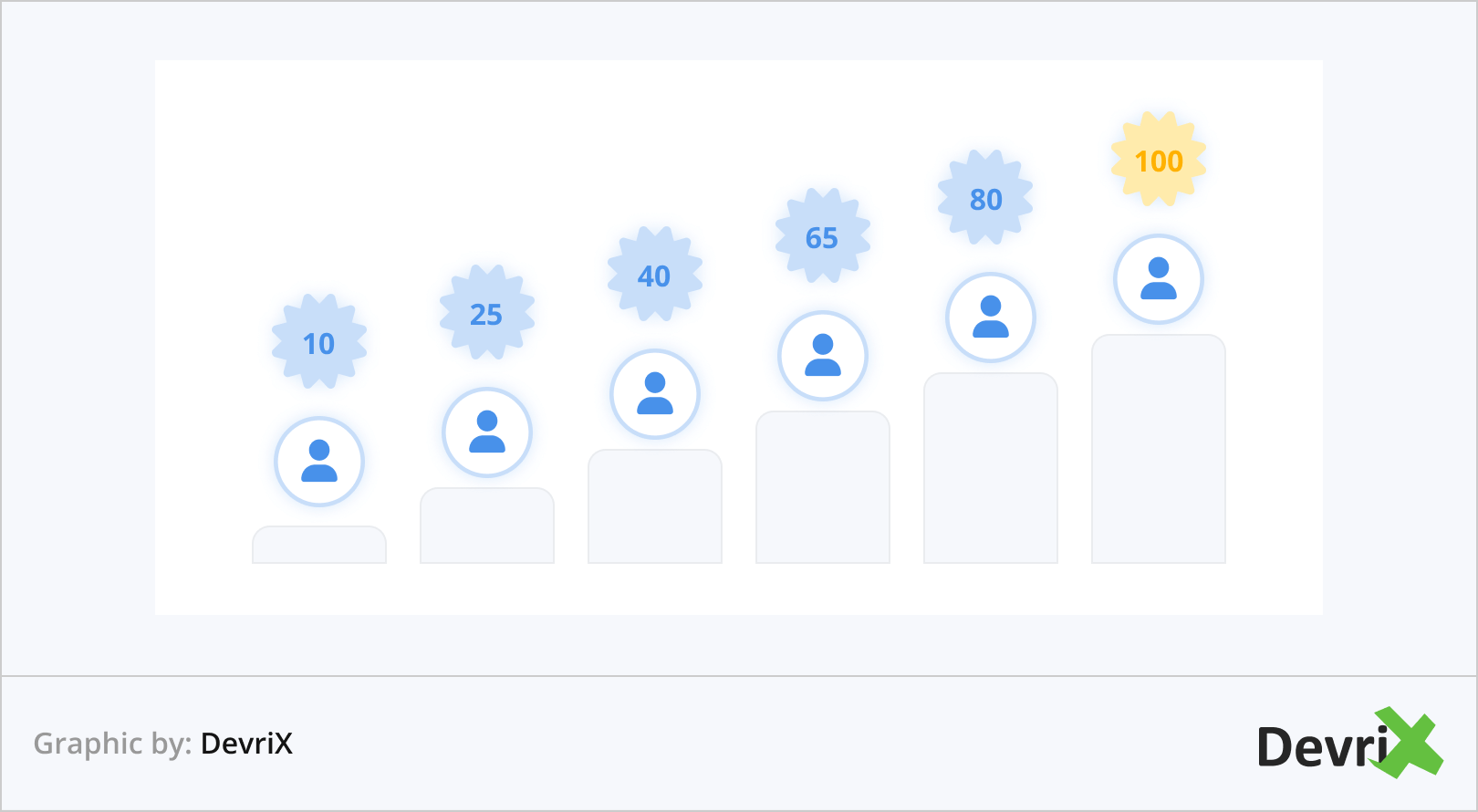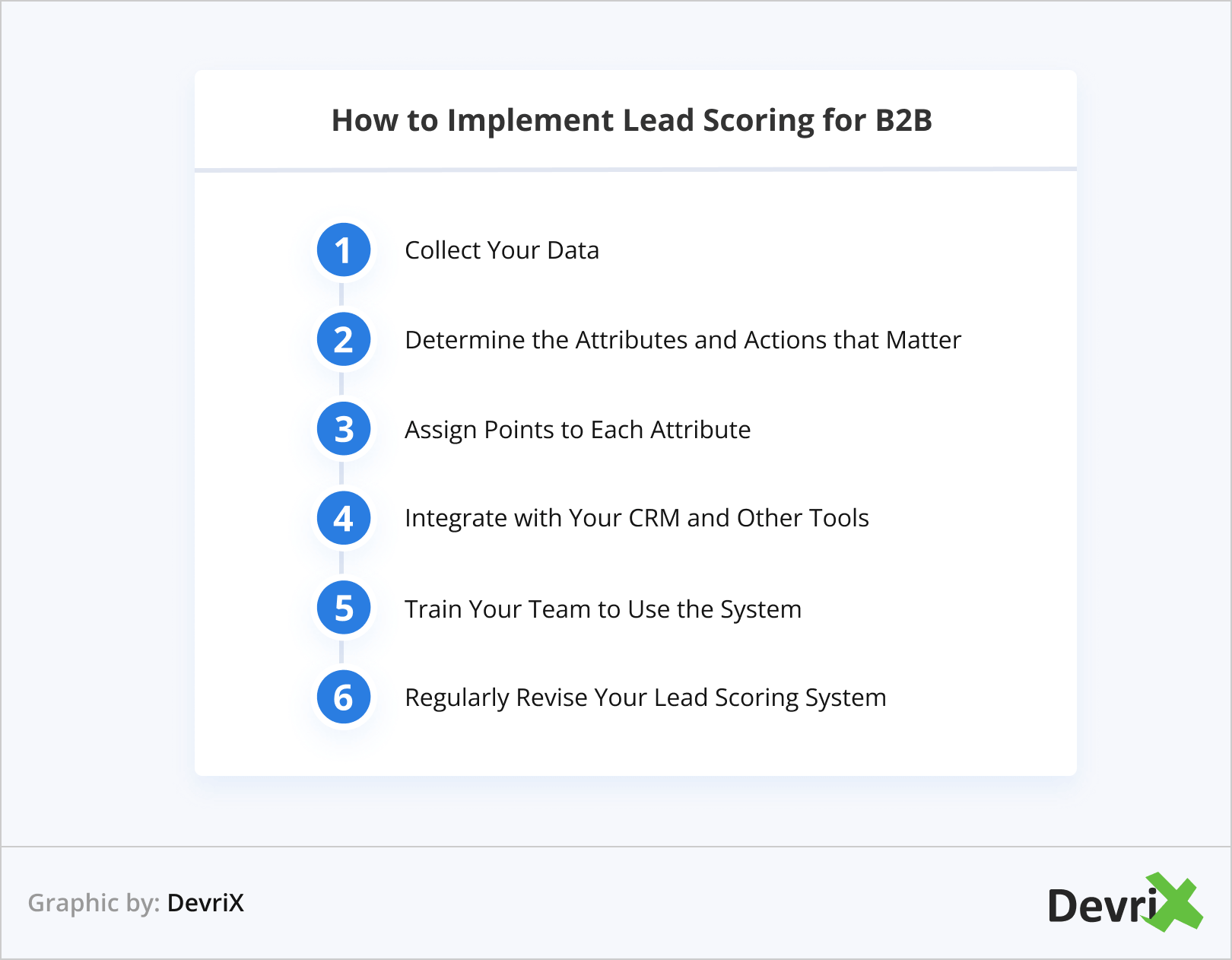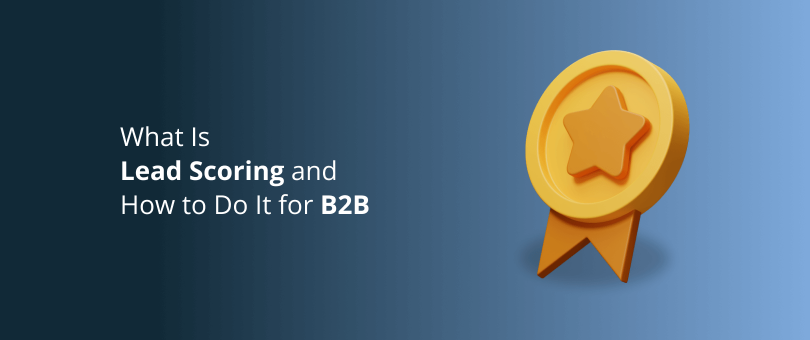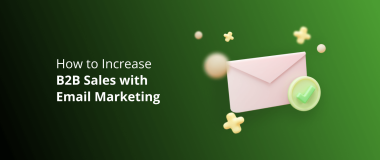One of the greatest benefits of digital marketing is that, if implemented properly, it can bring in a steady flow of leads.
However, it’s one thing to populate your pipeline and make sure that new potential customers are pumped in regularly, and a completely different endeavor to qualify them, determine their true value, and ensure conversions.
This is where lead scoring comes in.
It allows you to calculate how likely a lead is to convert at a given moment, based on a number of factors relevant to your business.
As a result, you know exactly when to reach out to a contact to make the best impression. This is especially important in B2B where the stakes are higher, the sales cycles longer, and the deals more complicated.
In this article, we’ll explain what lead scoring is and how to use it best for your business to boost sales.
Read on to find out!
What Is Lead Scoring?

Lead scoring is a process that businesses use to determine how ready a lead is to become a customer.
To that end, they analyze the information they’ve collected about their customers from different sources and channels. This includes input from the sales and marketing teams, as well as data from social media platforms, websites, email, and third-party sources.
The team cross-references this data with a set of attributes – actions and behavior patterns that indicate whether the lead moves closer to the conversion or away from it.
Each of these attributes is associated with a number of positive or negative points that make up the score. When a potential customer reaches a total of 100 points, this means that they are ready to be approached by a salesperson.
Lead scoring can be implemented manually – by making observations, calculations, and data analysis – or software can be used.
It’s crucial that the marketing and sales teams work together on creating the score and choosing the attributes that gauge the readiness of potential customers. This increases the quality of the process and ensures that the leads that hit the 100 mark are really the best fit.
How to Implement Lead Scoring for B2B
Managing leads can be a cumbersome and time-consuming process. That’s because not all of the potential customers that enter the pipeline are prominent prospects. Some of them may end up there by accident, others may not be ready to buy yet, and only a handful might qualify to successfully become clients.
Furthermore, depending on where they are on their journey, leads may have a different likelihood of converting, and may need time and nurturing to convince.
In B2B, the process is even more complex because the deals are of higher value, there is more than one decision-maker, and the sales cycles are longer and more complex.
For lead scoring to be successful, the business needs to implement an exhaustive preliminary analysis of its data and carefully choose the actions that add and subtract points to the score.
This increases the accuracy of the results and ensures that the prospects presented to the sales team are really ready to approach.
By implementing the following steps, you make sure that you will qualify and contact the right B2B partners at the right time, and, potentially, cut down the sales cycles and customer acquisition costs.

How to Implement Lead Scoring for B2B
- Collecting Your Data
- Determine the Attributes and Actions that Matter
- Assign Points to Each Attribute
- Integrate with Your CRM and Other Tools
- Train Your Team to Use the System
- Regularly Revise Your Lead Scoring System
1. Collecting Your Data
Regardless of whether you implement lead scoring manually or use a dedicated tool before you build your framework, you need to get your hands dirty with data.
The attributes that show whether the customer is ready are unique to each business and can only be determined by analyzing your own data and client history.
The best sources of information for these purposes are your sales and marketing team and the reports from your software.
Marketing Team Data
If you have a well-functioning funnel, it’s a safe bet that marketers already use some kind of system to qualify the leads that flow into the pipeline.
For example, they probably have prepared content for each stage of the funnel and can figure out where potential customers are on their journey based on the channels and pieces of content that they interact with.
They may be monitoring a set of actions to check whether leads are showing genuine interest in the product and the business, or just browsing.
They also may be implementing sales prospecting to analyze their profiles and behavior to sift out those that are the best fit for the business.
Regardless of what your approach is, the marketing-qualified leads end up with the sales team, and the leads that are a good fit but are not showing any active interest yet stay with the marketing team for further nurturing.
So far so good.
This type of qualification is quite similar to what happens in lead scoring.
However, if the marketing and sales teams don’t align, this may not be enough. There’s a risk there’s a gap between what the marketers provide and what the salespeople need.
Sales Team Data
Your next step is to see what the sales team has to say.
While marketers have a theoretical understanding of what customers want and what drives them to convert, salespeople are those who actually communicate with potential clients. This provides them with a unique opportunity to determine what really matters to the sale.
Furthermore, they know from experience whether the leads that marketing qualifies as ready to convert are, indeed ready and convert.
They can also provide the following information:
- A list of why the customer is or isn’t really interested in the product.
- Suggestions on what content to add to the funnel and where, in order to accelerate the customer’s journey.
- Insight on what types of content clients that have converted have interacted with, when, and how this affected their decisions.
- Other recommendations based on their experience in one-on-one customer communication.
Data from Tools
By analyzing the data, you can better understand the behavior of your leads and how it relates to the conversion.
One of the ways to do that is to build different attribution models and estimate the value of each touchpoint the customer has with your business. It can be tricky to establish how much a channel contributes to the sale, so make sure that you spend enough time analyzing this information.
Consider cross-referencing the result with additional factors, including the input of the sales and marketing teams. This way you will put the attribution models into context and will be able to better understand their meaning.
In addition, you should take into account all the information you have from social media platforms, emails, and website analytics.
2. Determine the Attributes and Actions that Matter
The next step is to determine which actions contribute to the conversion.
To that end, first, you should focus on the clients that have successfully converted and stayed with your business. Analyze their customer journey, mark the pivotal actions and interactions, and list them.
Then, analyze the behavior of client interactions that turned out to be a dead end. Analyze which actions didn’t end up in conversions and add them as negative factors.
Again, make sure that both the marketing and sales teams partake. This will ensure that they are on the same page and agree on the selection.

Some lead scoring actions to consider adding to your list of attributes are:
- Website Page Views. Which pages do clients that convert visit and how do they directly contribute to the sale?
- The Search Bar. Do they use the search bar, and if so, what phrases do they key in?
- Links Engagement. What links on your website do they click on?
- Landing Pages. What landing pages do they visit, how do they interact with them, and to what end? In what part of the funnel are the landing pages?
- Demo Requests. Does the customer request a demo or free trial, or ask for a sales quote? What chain of interactions led them to this?
- Email Engagement. Do they open your emails? And do they engage with the content and take any further actions?
- Content Interaction. What type of content do they interact with? Can you use it to tell where in the funnel they are?
3. Assign Points to Each Attribute
Most commonly, the lead scoring scale has three parts – cold, warm, and hot leads.
As mentioned, the total number of points that a lead needs to collect to become a prospect is 100.
Once you settle on the actions that cause a conversion, you need to assign a value to each one of them.
How many points an action adds (or subtracts) to the score depends on how important it is to you and how close it brings the lead to becoming a client. The more important the action is, the more points it adds to the score.
For example, viewing your pricing page and requesting a demo or free trial are actions that show strong interest and, generally, should get more points than, let’s say, reading your about page or downloading a freebie.
As for negative points, if you are working with B2B clients, non-company emails (such as @yahoo.com and @gmail.com) are a red flag and should decrease the lead’s score. You consider assigning them a high number of negative points.
However, lead scoring values are unique to your business, and you can only determine them depending on your own historical data from user behavior and your sales and marketing goals.
4. Integrate With Your CRM and Other Tools
For best results, lead scoring should be integrated with a CRM program. In fact, high-end CRM tools usually have in-built features that automatically pull the necessary information and do the scoring.
While manual lead scoring is not impossible, it is cumbersome and time-consuming. That’s why we strongly recommend using a dedicated tool, be it an all-inclusive CRM program or a stand-alone solution.
Modern tools should integrate with all of your marketing and sales programs and do the scoring for you. The process minimizes the risk of mistakes and/or missing out on any important details or customer actions.
When a potential customer reaches a milestone, the sales and marketing teams get a notification and can proceed accordingly.
Furthermore, if you are running a business with thousands of leads every day, you should consider investing in a tool with predictive analytics. These types of software use machine learning and AIs to improve the scoring model themselves. The more data they process, the more precise the process becomes.
5. Train Your Team to Use the System
For the lead score to be efficient, you need to use it regularly.
This means that you need to integrate it into your sales and marketing workflow and train the teams to properly use it.
In line with this, your sales team should contact only the prospects qualified by the system, instead of wasting time on potential customers that are not yet ready to buy.
This will increase their productivity and boost morale.
On top of that, your marketing team will obtain a better understanding of your customer’s behavior and will be able to provide them with more on-point marketing content that will move them through the pipeline faster.
6. Regularly Revise Your Lead Scoring System
As with, practically, everything in digital marketing, lead scoring is not a static process. Thus, you need to refine your strategy all the time according to new data and changes in the funnel, workflow, and pipeline.
Depending on how dynamic your industry and organization are, you should schedule quarterly or annual meetings with your marketing and sales team and revisit the attributes in the score.
Review whether they are still relevant and is their importance the same as before.
By tweaking the actions and points in the score, you will ensure that the process remains efficient and beneficial to your business.
Bottom Line
Lead scoring is a powerful tool that allows businesses to bootstrap their marketing and sales operations, and significantly improve productivity.
In addition, the process of creating a lead score can strengthen the connection between marketers and salespeople. It enables them to align their efforts and obtain a better understanding of the customer journey and the behavior of potential clients.
In B2B, this can be the difference between quickly sealing high-end deals with promising partners, and losing time, effort, and money on leads that will never convert.




